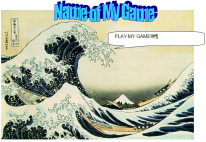PRESENTATIONS and LECTURES
Code Optimization
This lecture is about developing robust, maintainable code that uses the MVC model. I presented the content while teaching, recorded a draft, and then transcribed the draft to create this edition. You may use the PowerPoint slide deck, you can view the Web presentation, or you can read the transcript.
|
JDK Installation
Java Integrated Development Kit(s)
This video was created when I was teaching at Shoreline; now, the software edition numbers have changed, but the rest of the video is still current. IDE's are constantly changing, so the jGrasp IDE may not be the only one that students use. At the time that this video was created, there was a short time limit on the recording tool that was used, similar to YouTube videos. Nowadays, if the digital video is too fast, most video players can replay it at a slower speed with no loss of quality. | ||||||
Gestalt Theory and Game Design
Students connect to the online classroom through the Internet, and the lecture is conducted as though everyone was physically in the same room. I enhance the experience by sharing my computer desktop and drawing on it. In this lecture, I use online meeting annotation tools instead of professional slides or art software. This immediacy adds to the idea that I am in front of a classroom full of students, and drawing on the board. It also gives the impression that the student is watching a movie that becomes more interactive when they participate.
The recording is "the composer's notes", so to speak, instead of a polished performance. The difference can be as much as 15 minutes of silence that can be removed from every hour of class time. For example, the downloadable .zip file was excerpted from the original broadcast. The movie that can be viewed from this site was edited using Camtasia, and is about 3 minutes shorter than the downloadable excerpt.
 Minecraft, Large Creature in the Minecraft, Large Creature in theForeground Gestalt Theory can be applied to game design to make interactive simulations appear to be more real. There are many design principles that are used to create effective art, some of which enhance the 3D experience, especially at 60 frames per second. Two videogame snapshots that illustrate effective design principles are included. You may want to think about why these principles are effective as you watch the video.

Halo, Large Creature in the Background
|
Multicultural Computing
This slide deck is for a lecture I presented at Cascadia Community College. There is much more to intercultural computing, or international computing, than the Internet. I chose not to re-record the audio portion of the lecture that accompanies the slide deck. The slide deck by itself should help you understand how important it is to maintain your perspective and purview while addressing barriers to communications.
| ||||||||||||
Some presentations include images that were included with purchased software.

